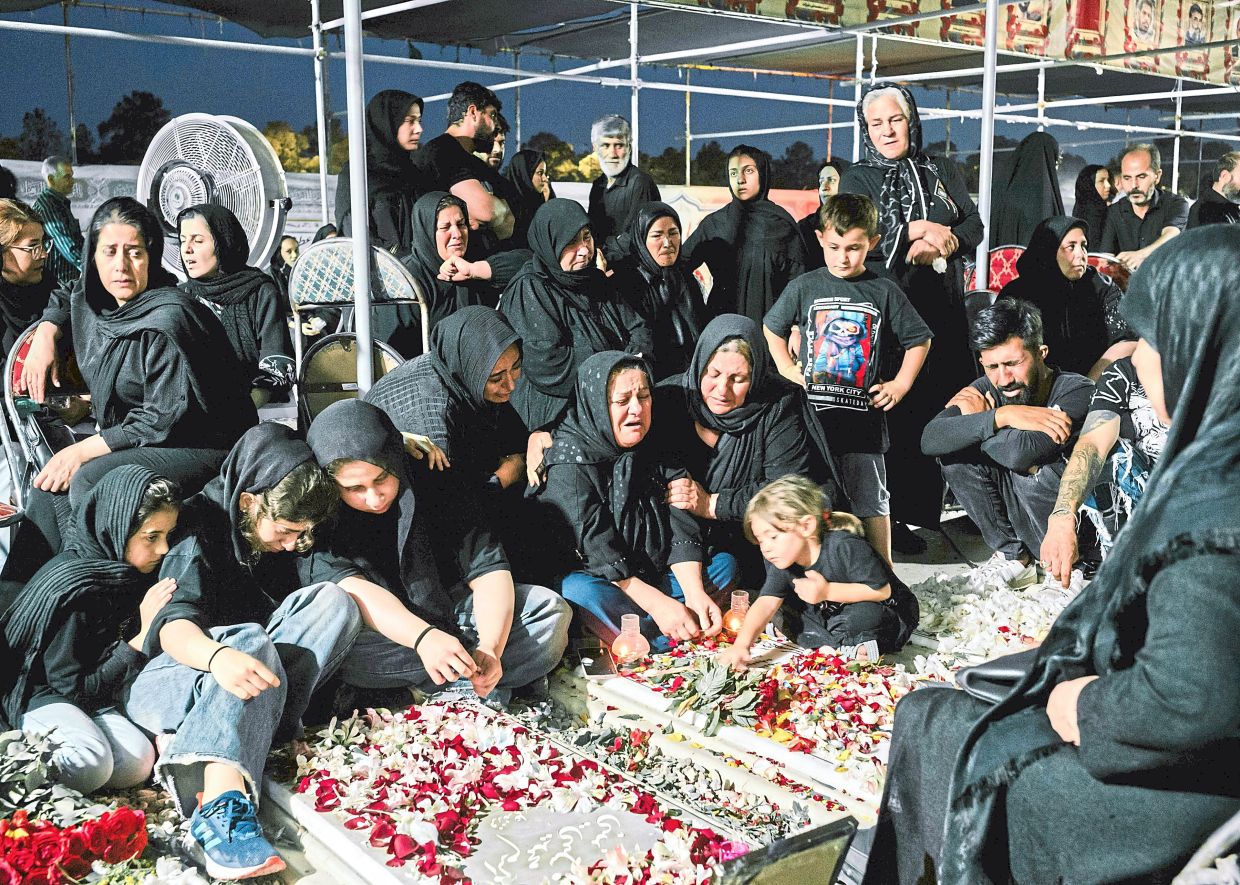
THE professor had a faint air of mystery about him.
A bodyguard trailed behind as the academic came and went from his apartment on a tree-lined street in central Teheran, neighbours said.
A taciturn man with a tight grey beard, nobody was quite sure why he needed protection. Everyone knew better than to ask.
Little of that concerned Amirali Khorami, the teenager who lived next door. Obsessed with video games and football, Amirali, 14, dreamed of becoming a professional goalkeeper, his family said. He hardly noticed the elderly neighbour who sometimes exchanged pleasantries with his father on the street.
Then, on June 13, in the early hours of the 12-day war between Israel and Iran that later drew in the United States, their fates were inextricably joined.
An Israeli bomb crashed into the home of the professor, Dr Ahmadreza Zolfaghari, who, it turned out, was one of Iran’s leading nuclear scientists.
Not only did the blast kill the scientist and his family, it also tore into surrounding buildings, smashing through wall after wall until it reached the cramped bedroom where Amirali was sleeping. It killed him too.
Rescuers took an hour to pull Amirali’s crushed body from the debris, his 21-year-old brother, Amirmohammad, said as he stood in the wreckage of their bedroom, nearly two months after the strike.
Amirmohammad pointed to a dust-smeared Spider-Man figure poking from the rubble.
“Amirali loved life,” he said. “What did he do to deserve death?”
Hundreds of civilians died in June, when Israeli bombs and missiles rained down for 12 days across Teheran, leaving it bloodied and reeling.
American bombers pounded key nuclear facilities to the south. But it was the strikes on the capital that registered the deepest shock among many Iranians, signalling that their country’s old rivalry with Israel had entered a volatile and dangerous new phase.
Israel sought to cripple Iran’s nuclear programme and weaken its leadership in the region at a pivotal moment, when Iranian proxies like Hamas and Hezbollah had been badly weakened. Fighter jets and drones pounded military command centres and other targets, wiping out Iran’s top military command as well as at least 13 nuclear scientists.
But the bombs also struck a crowded prison, a TV station broadcasting the news and apartments filled with sleeping families. Even commuters were not safe: bombs that fell on rush-hour traffic tossed vehicles into the air like toys, video footage showed.
In all, 700 civilians and nearly 400 military and nuclear personnel died, according to Iran’s Health Ministry. The Human Rights Activists News Agency, an independent US-based group, confirmed 436 civilian deaths, 435 military deaths and 319 yet unaccounted for.
Iranian counter-strikes on Israel, including ballistic missiles that struck major cities, killed 31 people, according to Israel’s Foreign Ministry.
The short yet fierce war signalled a seismic shift to an enmity that has shaped the modern Middle East.
For years, Israel and Iran were engaged in a shadow war. Iran fought Israel through its various regional proxies. Israel tried to cripple Iran’s nuclear programme through sabotage, subterfuge and targeted killings.
On the streets of Teheran, assassins on motorbikes stuck bombs to the cars of nuclear scientists or shot them in their seats. Wives and children were left largely unharmed.
In June, Israel cast aside that doctrine in favour of blunt military action that killed hundreds of civilians.
The deadliest episode, an hour-long bombardment of the notorious Evin prison, killed 80 people including prisoners, social workers and children, according to Iran’s health ministry.
Iran’s autocratic leaders have tried to put a brave face on their losses, seeking to channel national grief into their brand of defiant nationalism.
“What doesn’t kill you makes you stronger,” Ebrahim Rezaei, the spokesperson for the parliament’s national security committee, said in an interview.
Giant portraits of slain generals and nuclear scientists stared down over Teheran’s main squares. At official commemorations, video screens showed missiles streaking toward Israel.
At the University of Teheran, students packed into a hall where a cleric representing Iran’s supreme leader, Ayatollah Ali Khamenei, issued revisionist claims about the recent war.
“The United States and Israel begged us for a ceasefire,” he declared.
Fatemeh Panji, a 24-year-old student, was listening attentively. The war had been a terrifying experience, she said, recounting how she had hunkered inside her dorm as bombs fell nearby.
But it also left her determined to devote her future to Iran, “even my life,” she told me. — ©2025 The New York Times Company
This article originally appeared in The New York Times


